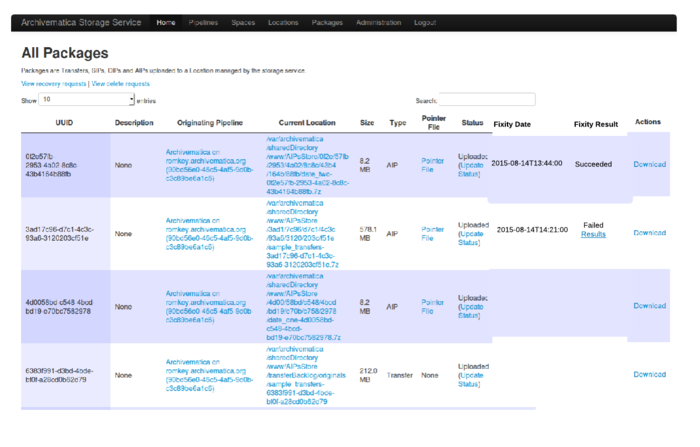Fixity checking and reporting
Jump to navigation
Jump to search
Main Page > Documentation > Requirements > Fixity checking and reporting
This page is no longer being maintained and may contain inaccurate information. Please see the Archivematica documentation for up-to-date information.
This wiki page describes requirements for gathering fixity check information from the | Fixity app and reporting through the Archivematica Storage Service.
Requirements[edit]
- Modify Storage Service to record time and results of fixity checks by adding columns to packages tab
- Add script to send email alerts to administrator(s) when a fixity check fails
Mockups[edit]
Storage Service packages tab[edit]
Two columns are added to the Storage Service packages tab:
- Fixity Date, showing the date and time that the fixity check was run
- Fixity Result, showing the outcome (Succeeded or Failed) with links to tool output in cases of failures or errors (successful fixity scan reports are empty)
Fixity Results: Failed[edit]
Failures should be reported as such if they are actual fixity failures, or if there were errors in the tool.
In the case of a fixity failure the report should have the following:
- Date/time that fixity was run
- AIP UUID
- Which files (names, UUIDs) failed fixity check
In the case of an error the report should have the following:
- Date/time that fixity was run
- AIP UUID
- Nature of the error- for example:
"data/objects/no_such_file exists in manifest but not found on filesystem"
